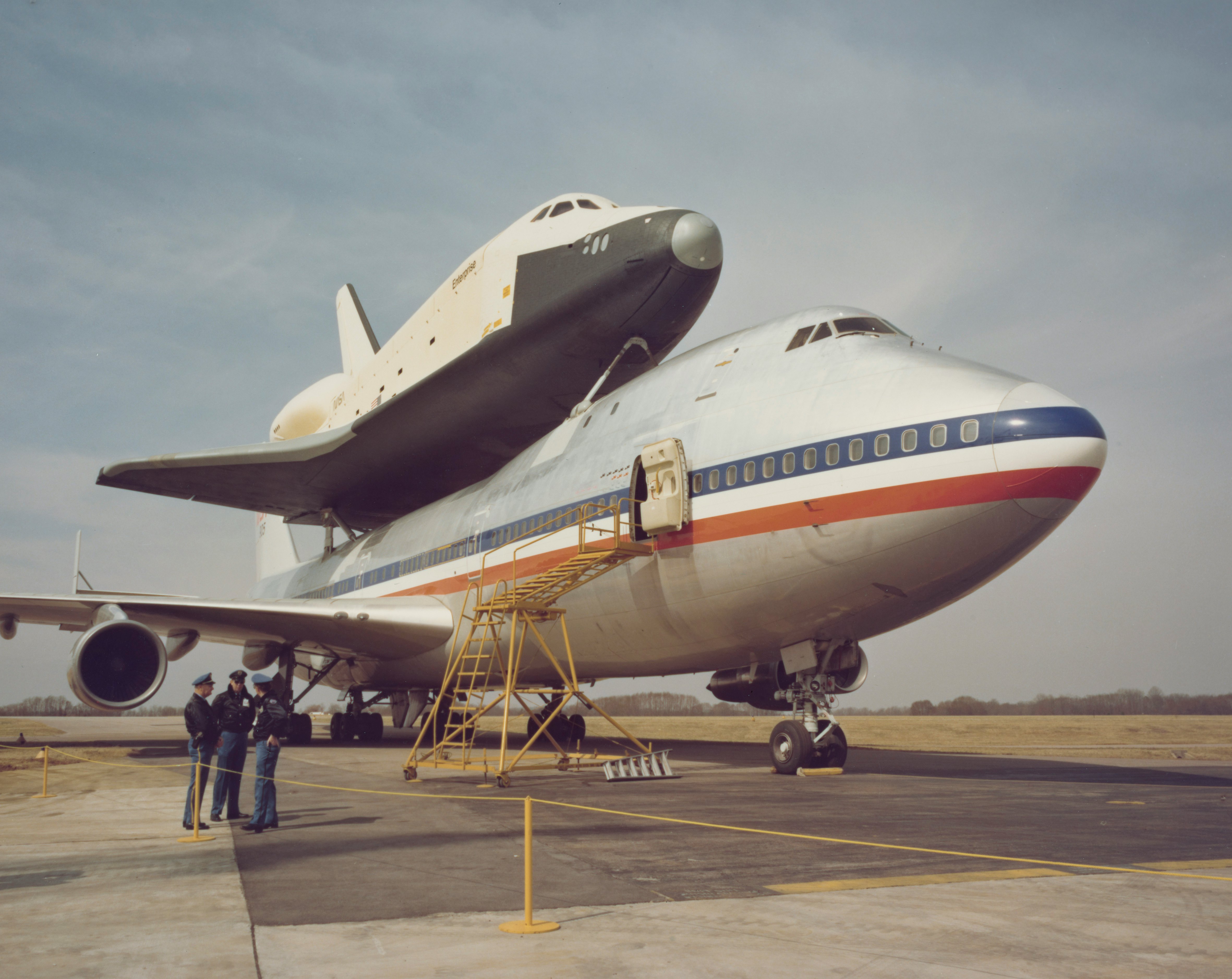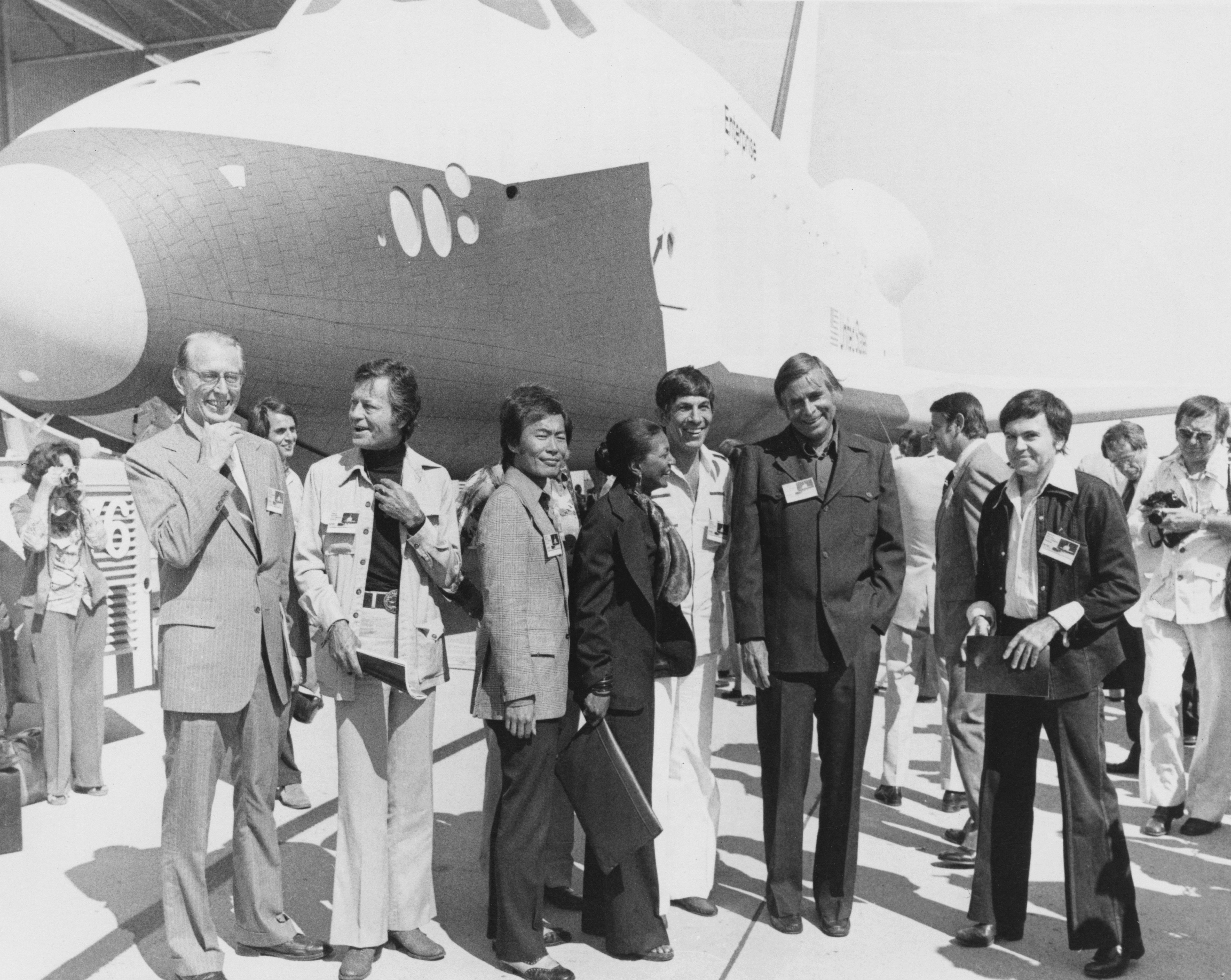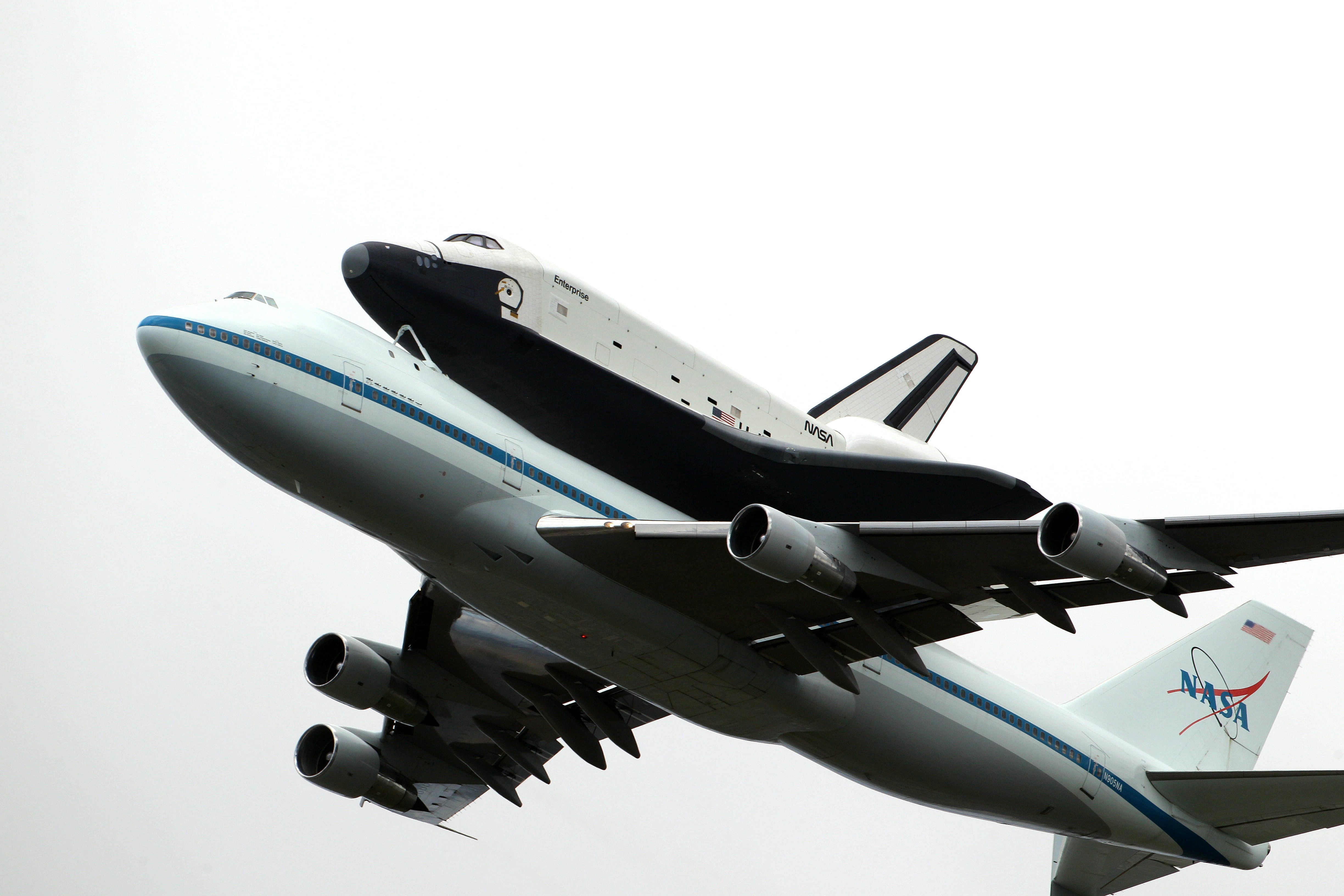
On August 12, 1977, NASA entered a new era with the launch of the Enterprise, a space shuttle prototype that never actually reached space. But despite falling short of even cruising altitude in a commercial jet, the entire history of NASA’s Space Shuttle Program piggybacked on the engineering breakthroughs made by this maiden ship on its first free flight.
The namesake Enterprise might ring familiar to the fandom of a certain sci-fi series, and that is no coincidence. Originally set to be named the Constitution to commemorate the bicentennial of the United States, President Jimmy Carter decided to renege on the name after receiving more than 100,000 letters from Star Trek fans, asking for the first Space Shuttle orbiter to be named after the USS Enterprise. Although Carter never referenced the series when documenting his decision for the name change, it was made quite clear when Gene Roddenberry and many of the cast members of Star Trek were present when Enterprise made its first debut.
Enterprise was first displayed to the public on September 17, 1976, in Palmdale, California, at the North American Rockwell Corporation. In 1969, initial planning began for the post-Apollo era, announced as the Space Transportation System, with a space station and nuclear rockets to Mars and the Moon that never quite took off. In January 1972, President Richard Nixon announced the development of the Space Shuttle as a partially reusable spacecraft to “give us routine access to space” via cheaper launch vehicles, a more fleshed-out version of the vehicle envisioned under the Space Transportation System. In July of that year, NASA awarded the development contract to Rockwell. Rockwell began to manufacture parts for Enterprise in June 1974.

Early history of the Space Shuttle Enterprise
Unlike its predecessors, Enterprise, perhaps ironically given its namesake, was never intended nor built to enter space. Its design included no engine or heatshield, both necessary components of a shuttle destined for space. Enterprise was a prototype. In January 1977, after the construction of the ship was complete, it was transported to Edwards Air Force Base in California, where it began a series of tests to ensure the success of future Space Shuttle flights.
When I get on Google Meet with Jonathan McDowell, an astrophysicist at the Harvard-Smithsonian Center for Astrophysics and member of the Chandra X-Ray team who also is also an aeronautics aficionado, he asks if I’m calling about the NCC-1701 or the OV-101, circling back to the call letters of the fictional Starfleet vehicle vs. the very real NASA space shuttle prototype.
”Well, it was really a pathfinder,” McDowell tells Inverse regarding the Space Shuttle Enterprise. “It would say (it) was the first real flight test in the Space Shuttle program that gave people confidence that the insane idea of delivering a spaceship back from orbit to a runway landing was actually feasible.”
Enterprise was the foundation for the rest of the Space Shuttle program, but as a prototype bound to go only about five miles above Earth, McDowell also said amusingly, “um, heaviest glider ever, right?”
“It was used in a number of ways,” McDowell says. “The most important way was the approach landing test series, which was really to convince people that a 100-ton spaceship could actually fly to a runway landing without any engine.”
Enterprise was designed to test the spaceship’s capacity to approach a runway and nail its landing — appropriately named the Approach and Landing Tests (ALT). ALTs were conducted both on the ground, but also in the air — but not quite how you’d think.
Before anything happened in the air, each element of the orbiter was tested on the ground to ensure that it was operational. Then it was time to move things into the atmosphere.

Space Shuttle Enterprise flight history
Enterprise’s first flight was not a free flight. It was bound to a Boeing 747 Shuttle Craft Aircraft (SCA); these were called captive tests. The idea with the shuttles was that upon deorbit, they would enter the atmosphere and then would glide their landings, not requiring jet engines. However, this meant NASA needed transport between Air Force bases. The solution for transporting the shuttles became two altered Boeing 747 SCAs that could carry Space Shuttles above the body of the plane.
The first captive flight of the Enterprise took place on February 18, 1977. It measured the dynamics of the two crafts together in flight, from their structural action to dynamics on the ground, such as braking. During this flight, the Enterprise was unmanned and the ship was inactivated.
Five more flight tests followed in a similar manner, with an uncrewed and non-operational Enterprise attached to the SCA for the entire duration of the flight. Each flight provided additional details about the dynamics of these two ships attached in flight.
Following these five flights, NASA flew the craft three more times with an activated Enterprise attached to this SCA ferrying two astronauts up. In total, four astronauts took flight in the Enterprise. One crew was made up of commander Fred W. Haise Jr. (who flew on Apollo 13) and pilot Gordon Fullerton, who would later fly aboard to shuttle missions. The second crew was comprised of commander Joe H. Engle, an X-15 pilot and Apollo back-up, and pilot Richard H.Truly, who would later serve as a NASA administrator. (Engle and Truly would later fly together on the second shuttle space flight.)
After NASA completed these test flights, it was time to see how the Enterprise would glide on its own when it was released from the SCA. This was a huge engineering feat.
“The ALT approach test — that was the really gutsy thing. You're going to put the 747 into a dive, separate the Enterprise from the Boeing, and have it not smash into the tails [of the 747], of course,” McDowell explains.
At 8:00 AM at Dryden Flight Research Center at Edwards Air Force Base, Enterprise coupled with the SCA, took flight with 65,000 spectators watching. Forty-eight minutes later, Enterprise separated from the SCA and flew on its own for the first time. Haise and Fullerton made a clean landing of the spacecraft by gliding it back down to the runway.
It was a risky flight, so NASA and the Air Force accounted for a lot of uncertainty with their landing strip. At Dryden, they used a seven-mile landing strip in a dried lake bed to allow for plenty of room for Enterprise to come to a stop.
If you’ve ever heard of the phrase “expanding the envelope,” it actually comes from aeronautics. McDowell explains that there is basically a threshold at different altitudes for maximum speeds – these ALT tests were used to expand the envelope and test those limits.

Later life of Enterprise
In March 1978, after more ALT testing at Edwards, Enterprise was transported to Marshall Space Flight Center in Alabama, where additional parts, such as an external tank and inner rocket boosters, were installed on the ship that could help simulate how the ship would sustain an actual launch.
Enterprise was sent for more testing at Kennedy Space Center, where it encountered an engineering problem that proved critical for future missions. An external tank that contained liquid nitrogen and oxygen developed an ice cap during a launch simulation, a potentially huge danger. This resulted in the addition of a vent to the external tank that prevented the build-up of ice.
In 1979, Enterprise and its sister ship Columbia, were both at Kennedy Space Center in Florida. Enterprise was on display to NASA employees and their families, drawing an audience of more than 75,000 people. This was only the beginning of Enterprise’s rise to celebrity status — even if it never went to space.
The spaceship was eventually ferried back (atop an SCA) to Edwards, but it made seven stops en route, each offering the public a chance to glimpse a peek at the Space Shuttle prototype. Although it had drawn major crowds prior to its arrival at Edwards, it stayed put, in storage for several years before being sent on a European tour shortly after the launch of Columbia, including the Paris Air Show in 1983, gaining it quite a celebrity status. In 1984, it even made an appearance at the World’s Fair in New Orleans.
NASA officially retired Enterprise in late 1985 and handed the ship off to the Smithsonian Institute. Before reappearing in the public, it spent 18 years at Dulles airport in Washington, DC. However, the Enterprise was not without use. In fact, even after its retirement, NASA found many uses for Enterprise.
First, NASA used Enterprise to help engineer a backup system that would keep a Space Shuttle safe in the event of a brake failure. Then, after the Challenger disaster, NASA tested different ways for crews to safely eject from a Space Shuttle using Enterprise.
Enterprise would prove wholly useful in determining the cause of the destruction of its sister ship, Columbia, the first Space Shuttle to make an orbital flight. On February 1, 2003, after 28 missions and 22 years in operation, the Columbia disaster occurred upon reentry into the atmosphere, killing the entire crew.
Because Columbia was only the second Space Shuttle, it bore more similarities to Enterprise than any of the other vehicle in the program. NASA ended up using fiberglass panels from Enterprise for foam impact tests. Foam is the material used to insulate the spacecraft, but unless it is packed perfectly, it can break loose during extreme conditions. In the test, a 1.67 piece of foam was ejected towards the fiberglass panel from Enterprise at a speed of 779 feet per second. The tests ended up offering strong evidence that the accident was a product of a foam strike.
In 2003, Enterprise was moved to the Smithsonian’s Air and Space Museum, where it was on display until 2011, when NASA retired the entire Space Shuttle fleet. Enterprise found its new home in New York City at the Intrepid Sea, Air, and Space Museum. It took its final voyage on the back of an SCA to John F. Kennedy Airport, where Leonard Nimoy (Spock in Star Trek) was there waiting to greet the spaceship before it arrived at its new home.







